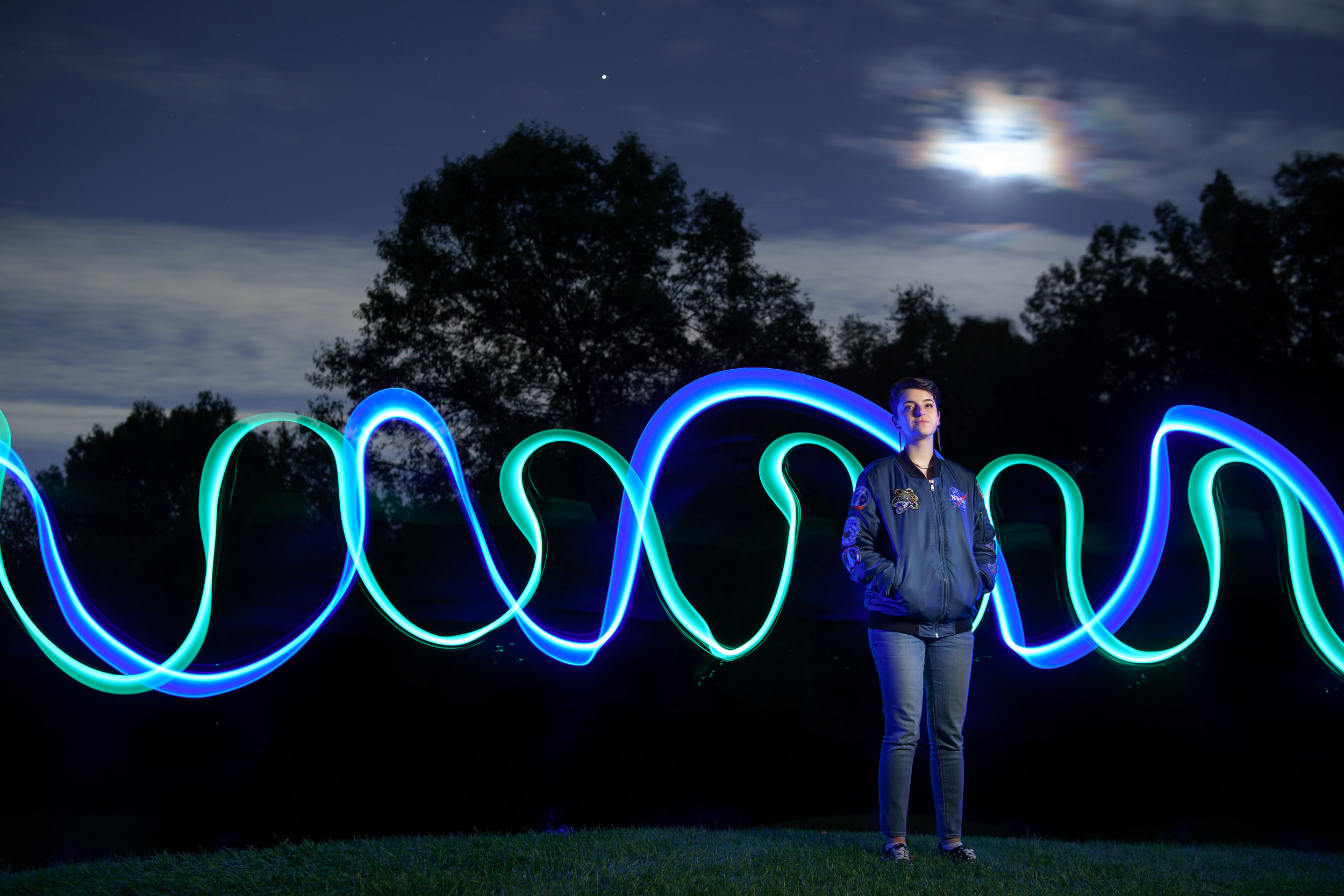Client: Oakland University
Location: OU Golf Course
Brief: Editorial photography highlighting NASA Intern and Oakland student Brooke.
With photography being all about capturing light, it’s easy for photographers to get frazzled working in the dark. I see it as an awesome opportunity to get creative utilizing different types of lighting to create dynamic scenes.
So when Oakland University contacted me asking if it was even possible to highlight Brooke under a night sky, I jumped at the opportunity. We lucked out, given the first night we scheduled had a clear forecast. We were also fortunate to get permission to go deep onto the golf course in the dead of night, which is important for eliminating unsightly sources of light such as outdoor floods and street lamps.
I started with a single, tiny flash, The Godox V350, using my Sony A7RIII. I chose the speedlight because it’s the weakest flash I own. Working in these extremely low light environments, I wasn’t concerned about having a powerful light source. Instead, I was focused on having a light that had a minimum power low enough that I could still keep it close to my subject without being too bright. I used this flash inside my trusty Glow Parapop on a C10 Cheetahstand. My flash was also gelled with a full CTO, so I could shift the sky’s color to a deeper blue tone. My first image was focused on capturing the the subject with an expansive area of stars around her. After all, I want to highlight her previous work with NASA and current studies on the effects gravity has on the immune system. I I found a spot to shoot uphill, to add power to Brooke’s poise.
Thankfully I moved quickly, because shortly after this image was captured, the clouds began to move in. I shifted to a wide aperture, longer shutter speed, and lower ISO. This capture some movement in the clouds.
Flash photography portrait with clouds in a night sky
Portrait of student with flash at night
Feeling like we already “landed on the moon” with the initial shot, we started discussing some alternate ideas, and decided to implement some light painting. Brooke is still being lit by flash, while 2 Oakland faculty members are making patterns with some neon glow sticks. This was with an 8 second exposure, and the camera in rear curtain sync. To organize, I would click the shutter and say go, which was the runner’s queue to enter the frame and move the glow sticks. I then counted aloud so they were aware when they should be out of the frame again (otherwise the flash would illuminate them). Around 6 I would remind Brooke the flash is coming so she could keep her eyes open.
Light painting behind portrait of student
Light painting behind portrait of student
Finally I brought out a second light, a Godox AD200, which I placed on the ground behind Brooke. I didn’t gel this one, as I wanted it to have a blueish hue to it. My thought process was by showing the light something mysterious has just taken place behind the subject, which I think fits well with the astronomy-themed session.
Godox V350 in Glow Parapop (CTO gel) camera right, Godox AD200 as rim light on ground.
This was my first portrait session focused on capturing the stars in the night sky. A few notes on the experience if you’d like to do something similar. The sky would have had WAY more star density if it was Milky Way season (April-July in North America). Also, we did this during a half moon. The less the moon is full, the darker the sky and more visible the stars. Conditions is everything when trying to capture the stars. No moon, peak Milky Way season, low light pollution, and clear skies are all ideal. As each of those factors get worse, you’ll have less desirable results.





